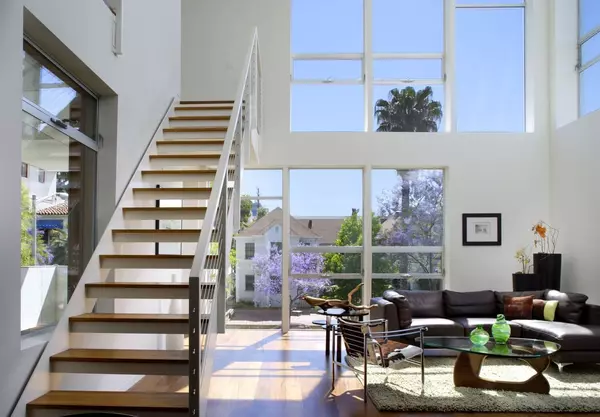Three Fixes for the Housing Crisis
Anti-apartheid activist and former South African president Nelson Mandela hit the nail on the head when he said, “It always seems impossible until it’s done.”
The adage could certainly fit the present housing supply and affordability crisis. The magnitude of the problem appears insurmountable. Canada needs to nearly double its housing starts to between 430,000 and 480,000 homes per year until 2035 to meet projected demand, according to the Canada Mortgage and Housing Corporation’s most recent estimate.
However, there are ways to fix the problem. For starters, it is critical that we lower the tax burden on new housing, reduce development charges (DCs), and speed up approvals.
Big problems require bold solutions. We must take concerted action to remedy the situation or our economy will suffer. The effects could be catastrophic. Governments could lose billions of dollars in taxes, development charges, permit fees and GST and HST from construction activity.
The construction sector contributes seven to eight per cent of Ontario’s GDP, with the residential sector representing a big chunk of that. The magnitude of the housing decline could be immense. In Ontario, an 80-per-cent drop in residential construction could reduce the province’s GDP by 1.5 to 2.5 percentage points.
To bounce back, governments, the industry and stakeholders need to bring in new measures to reduce the cost of housing, get shovels in the ground quicker, and make it easier to build housing.
Reduce the Tax Burden
At RESCON, we propose three fixes.
For starters, we must make it possible for builders to build houses that people can afford to buy. That means cutting the tax burden – namely the GST and HST on sales of new residential housing.
The federal government has scrapped the five-per-cent GST on new homes up to $1 million for first-time buyers retroactive to May 27 although the purchaser won’t get the actual rebate until the fall when it goes through the legislative phase. It is also reducing the sales tax for first-time buyers on a sliding scale for homes purchased between $1 and $1.5 million.
It’s a start. To spur the market, though, the provincial government also must ditch the sales taxes for first-time buyers. And, both levels of government need to axe the sales taxes on all new homes – not just for those buying their first one.
Taxes presently account for 36 per cent of the cost of a new home today, up from 24 per cent in 2012. The increases are crippling the market as the costs are ultimately passed on to the buyers.
Roll-back Charges
Second, the Ontario government must roll-back municipal DCs to 2014-15 levels and bring in legislative provisions to ensure that future increases are geared to the rate of inflation.
In some municipal jurisdictions, such as in central Ontario, the GTA and Ottawa, DCs have become a runaway train. In Toronto, DCs on a two-bedroom condo increased to $88,000 from $8,000 over a 10-year period. Hikes like that put housing out of reach of most homebuyers.
DCs are discretionary fees that municipalities can apply to developments to help pay for infrastructure to support new growth. However, the fees are now inconsistent with market realities.
Between 2014 and 2024, for example, the City of Toronto increased DCs for single and semi-detached homes by 464 per cent, whereas incomes in Ontario only went up 29 per cent. It doesn’t add up.
The province has brought in legislation known as Bill 17 – the Protect Ontario by Building Faster and Smarter Act – which permits builders to defer development changes until occupancy as opposed to when a building permit is issued. This means they won’t have to finance the charges while projects are being built. However, the charges still must be lowered.
Some municipalities have taken it upon themselves to act. In the City of Vaughan, for instance, DCs were cut in half because Mayor Steven Del Duca took action as nothing was being sold. The City of Mississauga followed suit, substantially cutting its DCs in January of this year.
Speed Up Approvals
Third, we must expedite the planning approvals process as delays make it more costly to build housing.
A report done by Altus Group for the Ontario Association of Architects found that Ontario municipalities take an average of 23 months to review site plan applications – far exceeding the provincially-mandated 60-day timeline.
These delays have significant financial repercussions. For a 100-unit apartment building, site plan holdups result in additional monthly costs ranging from $230,000 to $299,000. In calculating estimates of the annual value of building permits requiring site plan approval across Ontario, the site plan approval process is costing about $3.5 billion annually in lost opportunities and inefficiencies – a staggering increase from the $900 million estimated in 2018.
Protracted planning processes delay housing construction and add significant project financing costs which are ultimately borne by consumers.
To speed up the system, it would be helpful if municipalities were required to publicly report and post quarterly development approvals, starts and closing metrics, so the Ministry of Municipal Affairs and Housing could audit and monitor the ability of a municipality to meet legislated timeframes. If a municipality is unable to comply, a third-party regulatory review could be done to bring them into compliance.
The increased adoption of property technology such as LandLogic and DEVNEX could also speed up the system. Ontario lags other more advanced jurisdictions in the application of digital tools and platforms.
At first, the task may appear daunting, but the solutions are obvious. It is time to embrace the fixes.
Recent Posts










